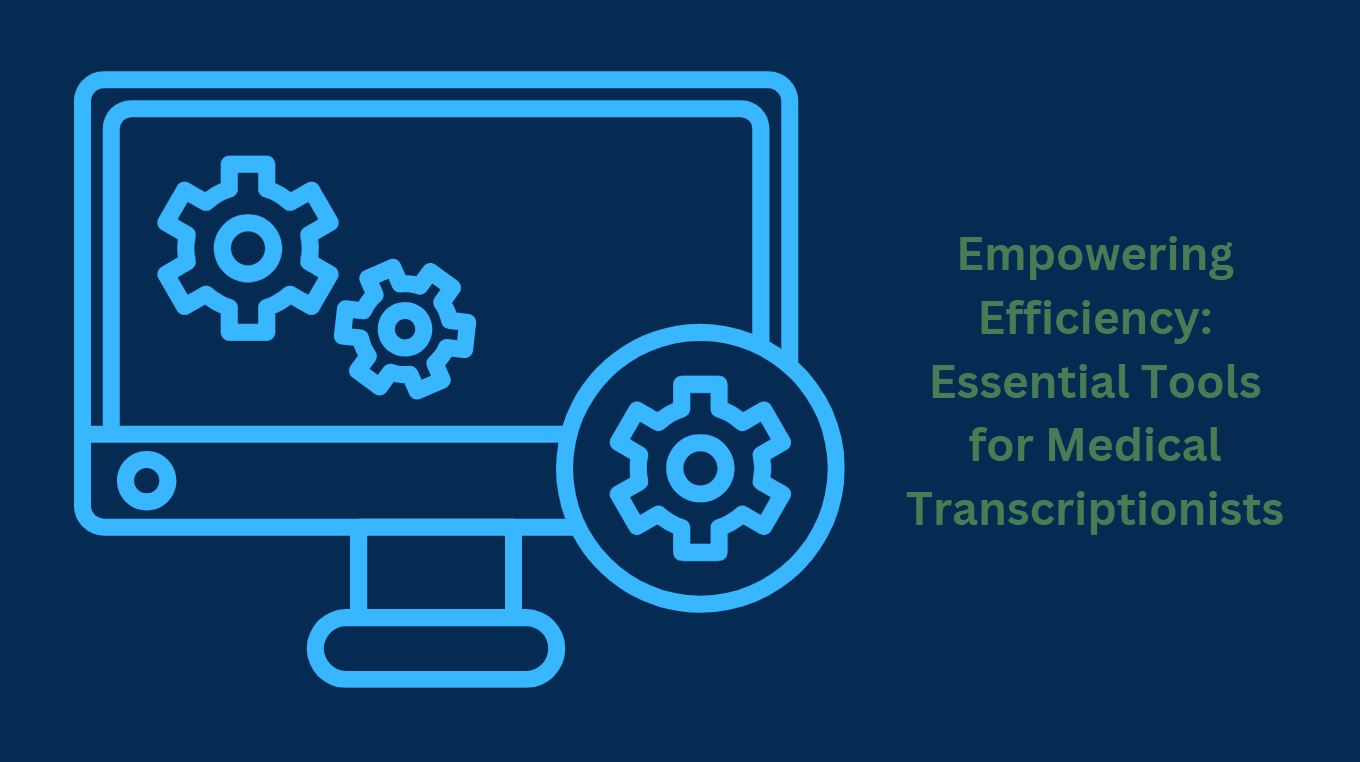- Likes
- Followers
- Followers
- Followers
- Subscribers
- Followers
- Members
- Followers
- Members
- Subscribers
- Subscribers
- Posts
- Comments
- Members
- Subscribe
Empowering Efficiency: Essential Tools for Medical Transcriptionists

Tools for Medical transcriptionists are essential to successfully convert audio recordings into written medical documents. These tools and software technologies guarantee accuracy and adherence to industry standards in addition to increasing efficiency. In this article, I’ll discuss the essential tools and software that medical transcriptionists need to provide accurate transcriptions and expedite the transcription process.
1. Transcription Software
For medical transcriptionists, transcription software is an essential tool as it offers an interface for typing, editing, and playing back audio recordings. Typical choices for transcribing software are as follows-
- Express Scribe: An adaptable transcribing software with programmable hotkeys for playback control, support for multiple audio formats, and foot pedal control.
- Transcribe: An online transcription tool with text formatting and playback speed modification capabilities that lets users upload audio recordings and transcribe them straight from the browser.
- InqScribe: A versatile transcription tool that allows for efficient transcribing with customizable keyboard shortcuts, speaker recognition, and time coding.
2. Foot Pedal
Medical transcriptionists can control audio playback while typing with a foot pedal, a hands-free device. With three pedals for play, pause, rewind, and fast forward, foot pedals allow for smooth control of audio playing without interfering with typing.
3. Reference Materials
To ensure accuracy and consistency when transcribing medical terms, abbreviations, and procedures, medical transcriptionists use reference materials. Important sources of information consist of-
- Medical dictionaries: Extensive dictionaries that include definitions, spellings, and medical terminology.
- Drug reference guides: Reference materials with details on prescription drugs, amounts, and interactions.
- Style guides: Sector-specific guidelines that specify transcribing standards, punctuation requirements, and formatting patterns.
4. Text Expanders
With text expanders, medical transcriptionists can increase efficiency by setting up shortcuts for often used words, phrases, or medical keywords. The text expander reduces recurring typing and saves time by automatically expanding the shortcut into the full text when you type. Typical text expander tools consist of-
Posts You May Like
- TextExpander: A configurable tool for expanding text that can be used to create and arrange snippets, sync data across devices, and integrate with other programs.
- PhraseExpress: A program for text expansion that enables users to quickly insert text macros, templates, and autotexts into documents.
5. Speech Recognition Software
Medical transcriptionists can benefit from speech recognition software by having less manual typing required when speaking words into text. Speech recognition software can speed up transcribing and increase productivity, but it cannot replace human transcriptionists. Software for speech recognition examples include-
- Dragon NaturallySpeaking: A well-known speech recognition program that accurately translates speech to text, enabling users to transcribe and dictate audio files.
6. Electronic Health Record (EHR) Systems
Medical transcription and patient records are integrated by EHR systems like Epic and Cerner, enabling transcriptionists to enter transcribed data straight into patient charts. EHR systems improve data quality, workflow efficiency, and healthcare professionals’ access to medical records.
7. Text Editing and Proofreading Tools
Transcriptionists are assisted in editing and proofreading transcribed materials for grammar, punctuation, and readability by programs such as Grammarly and Hemingway Editor. They guarantee flawless and error-free medical transcripts, enhancing the general caliber and lucidity of medical records.
8. Secure File Sharing Platforms
Transcriptionists can safely share and receive audio recordings and transcribed documents via secure file sharing services like Dropbox and Google Drive. They make medical transcription procedures more collaborative, data-sharing, and confidentiality compliant.
Conclusion
Medical transcription professionals can improve their productivity, accuracy, and efficiency when transcribing medical information by utilizing these crucial tools for medical transcriptionists. These software and tools, which range from foot pedals and transcription software to reference books and text expanders, enable medical transcriptionists to expedite the transcription process and produce precise, excellent transcriptions that satisfy the requirements of the healthcare sector.
Image credit- Canva


Comments are closed.